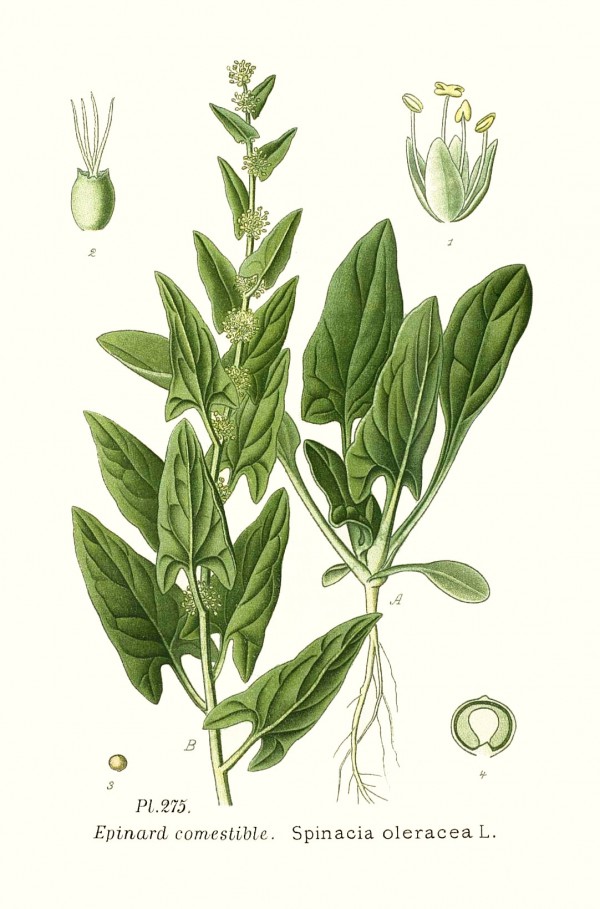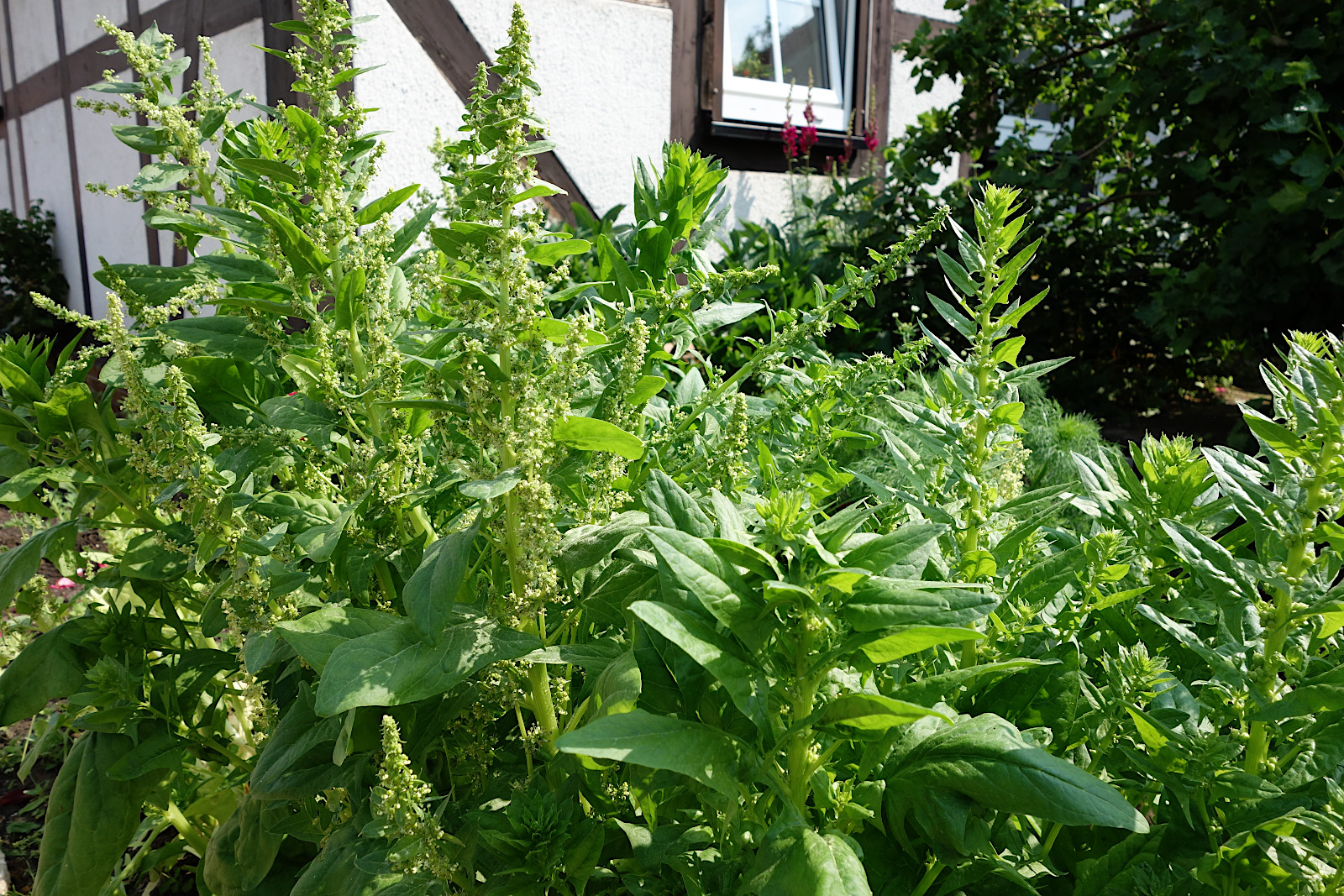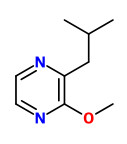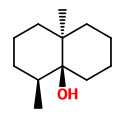Spinacia oleracea L. - Chenopodiaceae - spinach, Spinat
Monoecious annual or biennial herb, up to 30cm high, probably native to western Asia, widely cultivated; glabrous, stem erect, not branched; leaves gradually smaller distally; blade oblong, base cuneate, bracteoles orbicular-obovate; male and female flowers inconspicuous, yellow-green; seeds smooth (3-4mm) or prickly (6mm).
„Spinach is an important and widely cultivated crop of unknown origin, though known from the Mediterranean region since ancient times. The plant is prized as a rich source of vitamins, calcium, iron, and antioxidant carotenoids, but, if ingested in excessive amounts, the high concentration of oxalates in the leaves can be toxic by inhibiting the absorption of calcium. The cultivated form named var. oleracea has spiny seeds and tends to be more cold hardy than var. inermis, the smooth-seeded variety that is more tolerant of warm weather.“
http://www.efloras.org/florataxon.aspx?flora_id=1&taxon_id=200006938
„Spinach is sold loose, bunched, packaged fresh in bags, canned, or frozen. Fresh spinach loses much of its nutritional value with storage of more than a few days. While refrigeration slows this effect to about eight days, spinach will lose most of its folate and carotenoid content, so for longer storage, it is blanched and frozen, cooked and frozen, or canned. Storage in the freezer can be for up to eight months.“ https://en.wikipedia.org/wiki/Spinach
[Penn State. „Storage Time And Temperature Effects Nutrients In Spinach.“ ScienceDaily. ScienceDaily, 23 March 2005.] https://www.sciencedaily.com/releases/2005/03/050323124809.htm
Headspace samples revealed that potent odorants of raw spinach are (Z)-3-hexenal, methanethiol, (Z)-1,5-octadien-3-one, dimethyl trisulphide, octanal, 2-isopropyl- and 2-sec-butyl-3-methoxypyrazine. Boiled spinach contained dimethyl sulphide, methanethiol, dimethyl trisulphide, methional and 2-acetyl-1-pyrroline as the most important odorants. After drying and storage of raw spinach, methylpropanal, 2- and 3-methylbutanal and propanal were identified as the odorants with higher odour activity values. (Z)-1,5-octadien-3-one and methional, in a concentration ratio of about 1 : 100, are responsible for the fishy off-flavour of dry spinach stored at lower temperatures under nitrogen. A hay-like flavour was caused by oxidative degradation of furan fatty acids, yielding 3-methyl-2,4-nonanedione.
[Fishy and hay-like off-flavours of dry spinach., Masanetz, C., Guth, H., Grosch, W., Zeitschrift für Lebensmitteluntersuchung und-Forschung A, 206(2), 108-113, 1998]
An SDE extract of blanched spinach leaves showed green notes reminiscent of slightly cooked vegetables, notes of tobacco, violet leaves and oolong tea. The classical compounds exhibiting green notes (C6) like hexanal (0.9%), (E)-2-hexenal (37.3%), (E)-2-hexenol (35.6%), (Z)-3-hexenal (0.5%), (Z)-2-hexenal (1.3%), hexanal (2.2%), (E)-3-hexenol (0.4%), and (Z)-3-hexenol (3.0%) dominated. Some aldehydes like the (Z)-hexenals as well as octanal (0.3%), nonanal (0.2%), (E)-2-octenal (0.2%), (E)-2-decenal (0.4%), 2-undecenal (0.3%), (E,Z)-2,6-nonadienal (0.1%) and (E,Z)-decadienal were only present in this extract. A second extract collected after prolonged cooking time exhibited meaty, smoky, phenolic, typical spinach notes. Main components were also green (C6) compounds like (E)-2-hexenal (17.0%) and (E)-2-hexenol (30.6%), but there were more tenacious compounds present like (E)-3-methyl-2-nonen-4-one (green, stalk, mushroom, sea, fatty, lovage), (Z)-3-(3-hexenyloxy)-hexanal (fatty, nutty, herbal, green) and (E)-3-(2-hexenyloxy)-hexanal (green, vegetable, green peas, fatty). Both extracts contained benzaldehyde (0.5% and 1.0% resp.), β-cyclocitral (0.3% and 0.1% resp.), safranal (0.2% and 0.1% resp.), geosmin (0.1% both), β-ionone (0.4%, 0.5%), (E)-6-methyl-6-(5-methyl-2-furyl)-3-hepten-2-one (0.5% and 1.4%; carrot, woody, orris, fruity, fresh), epoxy-β-ionone (0.1%, 0.2%), 4-vinylguaiacol (0.4%, 6.7%), and phytol (1.8%, 13.0%). Several alkyl-3-thiophenecarbaldehydes were found as new natural products with interesting organoleptic properties. Some already known known trace compounds with strong flavour impact were 5-ethyl-1-cyclopentene-carbaldehyde, (E,E,E)-2,4,6-nonatrienal, (E,E)-2,4-nonadienal, (E)-2-nonenal, vanillin, 3-methyl-2,4-nonanedione, damascenone, (E,Z)-2,6-nonadienol, indole, and 2-methoxy-3(1-methylpropyl)-pyrazine.
[The volatile constituents of extracts of cooked spinach leaves (Spinacia oleracea L.)., Näf, R., Velluz, A. , Flavour and fragrance journal, 15(5), 329-334, 2000]
Blanched leaves of Spinacia oleraceae contain astringent and mouth-drying compounds, which are flavon-3-ol-O-glycosides. By means of the half-tongue test, human tresholds are in between 3.0 and 69 µmol/l (water). The lowest treshold was found for 5-hydroxy-3,3′-dimethoxy-6:7-methylendioxy-flavon-4′-O-β-D-glucuronide.
[Identification of the key astringent compounds in spinach (Spinacia oleracea) by means of the taste dilution analysis., Brock, A., Hofmann, T., Chemosensory Perception, 1(4), 268-281, 2008]

Masclef, A., Atlas des plantes de France, vol.3 t.275 (1893)
http://plantgenera.org/species.php?id_species=967644

growing spinach in a garden, CC BY-SA 3.0, Author: Andreas Kraska


